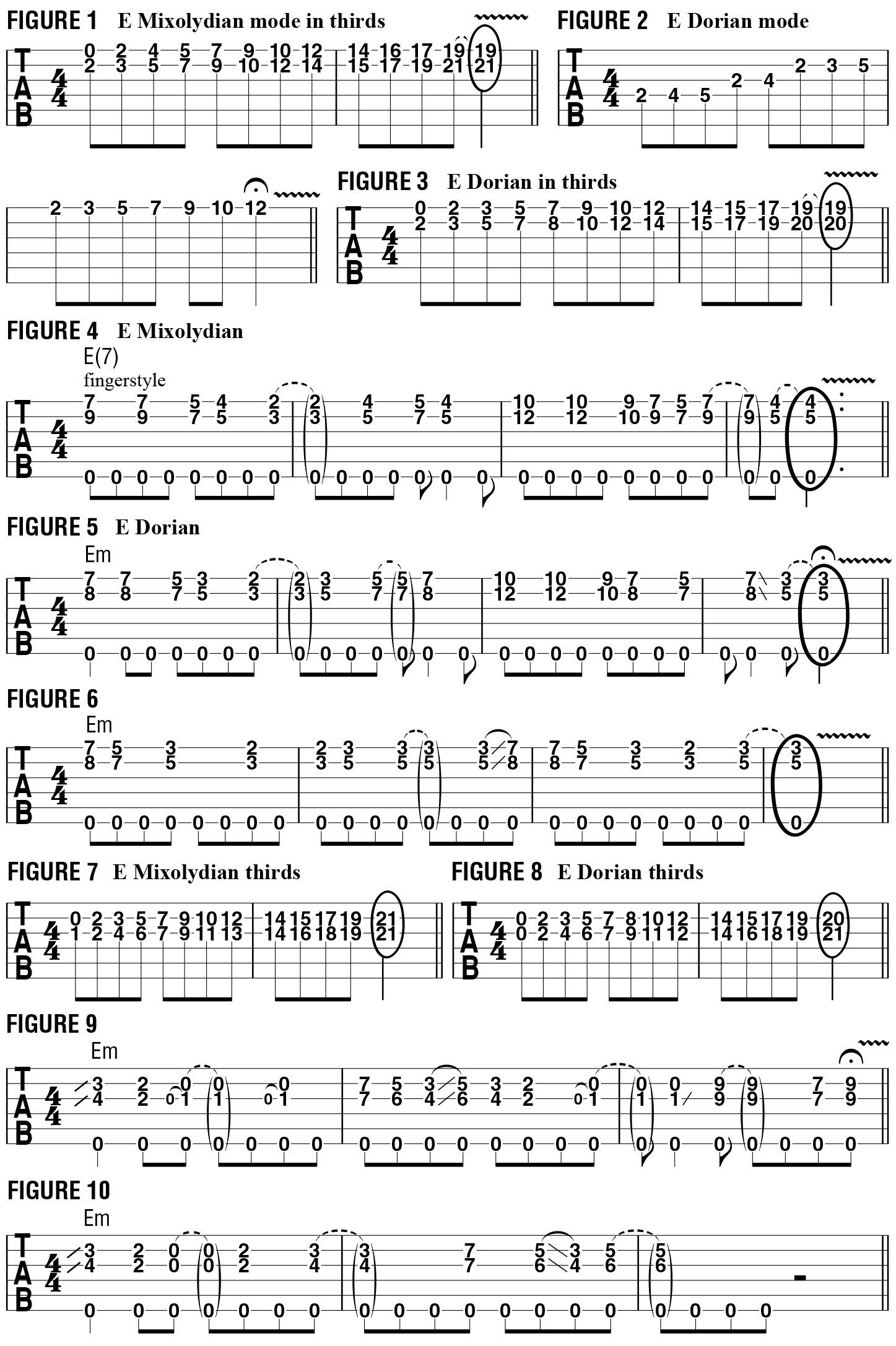Harmonizing a Melody with Major and Minor Thirds
Master the most common two-note harmony interval.
Guitarists spend a lot of time playing in an ensemble setting, in which they’re tasked with providing either a single-note lead melody or a rhythm part in support of someone else’s melody. For an unaccompanied guitarist, however, it often comes down to being able to intertwine melody, rhythm and harmony in a stand-alone guitar part, what’s known as “chord-melody” style, and good, effective way to do this is to harmonize a melody in two voices against a pedal tone.
The most common two-note harmony is based on the interval of a third. Using a standard seven-note scale, such as the major scale or one of its modes, a note is paired with another one found two scale degrees higher. For example, in the key of E and using the E major scale (E F# G# A B C# D#), the E root note is harmonized a third higher by G#, the note found two scale degrees above E. The second, F#, is harmonized by A, which is the note found two scale degrees above F#. These notes are recognized as being “thirds apart.”
The mode most closely associated with blues is Mixolydian, as the I, IV and V chords in a standard blues progression are all dominant seven chords, which are inherently Mixolydian, due to the lowered, or “flatted,” seventh. In the key of E, those three chords are E7, A7 and B7.

FIGURE 1 illustrates the E Mixolydian mode (E F# G# A B C# D) played in thirds on the top two strings. Mixolydian is the fifth mode of the A major scale: A B C# D E F# G#, meaning it consists of the same seven notes, only starting on and oriented around an E root instead of A.
Now, to switch from the dominant-seven sound of E Mixolydian to a minor-seven sound, one can simply replace the major third, Gs, with the minor third, G natural. The resultant scale is spelled E F# G A B C# D and is called the E Dorian mode, which is the second mode of the D major scale: D E F# G A B C#. FIGURE 2 illustrates the E Dorian mode, and FIGURE 3 shows it played in thirds on the top two strings.
FIGURE 4 is a harmonized melody based on E Mixolydian and played on the top two strings over a low-E pedal tone. FIGURE 5 shows the same melody converted to E Dorian, with each G# note replaced by G. FIGURE 6 presents a similarly constructed harmonized line inspired by Fleetwood Mac’s “Rhiannon.” This approach can also be applied to other pairs of adjacent strings: FIGURES 7 and 8 show the E Mixolydian and E Dorian modes played in thirds on the second and third strings, respectively, and FIGURES 9 and 10 offer harmonized melodies based on these modes and played over a low-E pedal tone.
Get The Pick Newsletter
All the latest guitar news, interviews, lessons, reviews, deals and more, direct to your inbox!
Guitar World Associate Editor Andy Aledort is recognized worldwide for his vast contributions to guitar instruction, via his many best-selling instructional DVDs, transcription books and online lessons. Andy is a regular contributor to Guitar World and Truefire, and has toured with Dickey Betts of the Allman Brothers, as well as participating in several Jimi Hendrix Tribute Tours.
“There are so many sounds to be discovered when you get away from using a pick”: Jared James Nichols shows you how to add “snap, crackle and pop” to your playing with banjo rolls and string snaps
Don't let chord inversions bamboozle you. It's simply the case of shuffling the notes around








![Joe Bonamassa [left] wears a deep blue suit and polka-dotted shirt and plays his green refin Strat; the late Irish blues legend Rory Gallagher [right] screams and inflicts some punishment on his heavily worn number one Stratocaster.](https://cdn.mos.cms.futurecdn.net/cw28h7UBcTVfTLs7p7eiLe.jpg)


